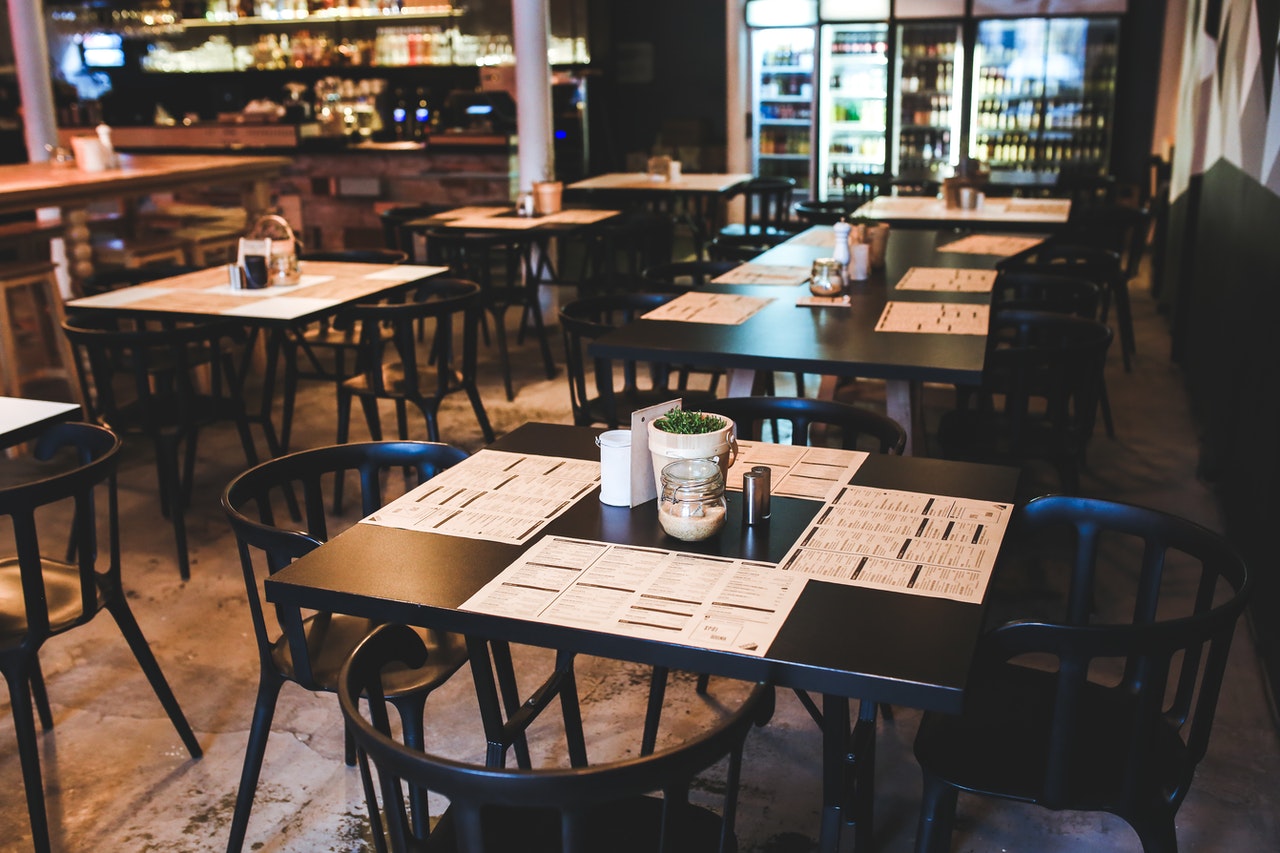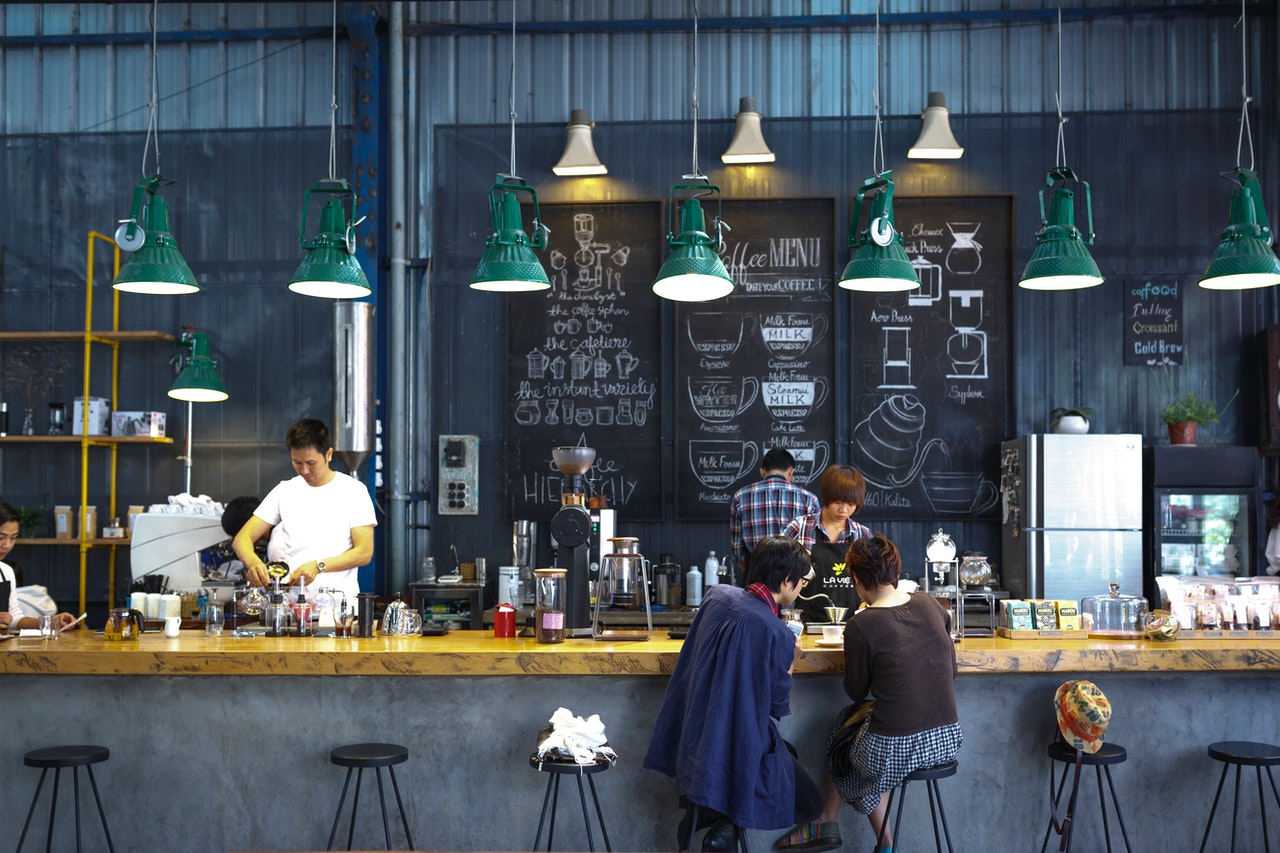Application of Lean Six Sigma Can Help Improve Your Sales, Brand And Customer Satisfaction
Getting The Edge!

Application of Lean Six Sigma first requires the deep understanding of what is Lean and What is Six Sigma, and what is Lean Six Sigma (combined).
Furthermore, it also requires that you should know the size and complexities of the industry you want Lean six sigma to apply. Generally speaking, the Lean Six Sigma is more conducive for the service sector and Six Sigma is more rooted in the manufacturing. However, it is not a rule, even ‘Lean’ started from manufacturing and can make good sense to apply in all types of industry.
I will now first provide the overview of the general application of Lean Six sigma and then will provide the specific hypothetical example applying it on the restaurants (Hospitality sector)
What is Lean
Lean is simply less fat, meaning less waste. You may very well already know it from your nutritionist, or from the diet instructors, who may guide you how to get lean and shed off extra weight fast.
Well, the core concept still remains the same. But now we are talking about eliminating or reducing the fat from the business processes. And believe me, once you diagnose, you will see a lot of fat accumulated over the years in the business processes. These business and service processes are required to become smarter, efficient, and effective for the customers. In other simple words, faster in delivery times, especially for the application of Lean Six Sigma.
As an example, if you apply for a bank loan and it takes about 30 days to get the money in your account. This typical process with long turnaround time can be further investigated to determine what is taking that long.
On further scrutiny you may come to know that actually the internal processing time is just 2 working days. And it may have too many unnecessary steps and redoing of the same work. This all amounts to non-value added activities which do not do any good to the customers.
These NVA steps are typical waste in the processing, which may be required to be eliminated during the application of Lean Six Sigma.
The Lean extensively talks about the eight kinds of waste (in Japanese it is called Muda).
These include over transportation, over inventory, over processing, over mobility, over waiting, over production, unnecessary defects, underutilized talents. When you adopt a Lean mindset, you need to be aware of these 8 wastes during your application of Lean Six Sigma project.
What is Six Sigma

Six sigma is a 5 phase defects reduction and variation reduction science, that helps to improve process output by eliminating or reducing any defects and errors. It uses the famous DMAIC framework, that stands for Define, Measure, Analyze, Improve and Control.
Armed with this framework you can improve any area of business or even your own life. DMAIC is problem solving methodology that works based on solid hard data. That helps you to make better informed decisions and improve the existing processes much better than before.
Six Sigma operates in a systematic manner with project management methodology. It is essential to have Project Charter first to define the improvement project, its timeline and deliverables for the application of Lean Six Sigma Project.
It has its formal start and a formal logical end to prove that the process variation has been controlled and the product or service defects have been reduced or eliminated.
Moving from phase to phase with extensive usage of the statistical tools, Lean Six Sigma makes it case to accomplish the feat as no other Quality method has been able to achieve earlier.
What is Lean Six Sigma
Quality Practitioners have been discovering and working on many business improvement tools, solutions and methodologies. Initially, the Lean acted separately and the Six Sigma acted separately.
Lean’s main focus was on improving the speed whereas the Six Sigma’s main focus was to reduce the variation and defects.
Practically speaking, both speed and the defects are interlinked in one way or the other. You cannot achieve speed without eliminating the process errors or vice versa. Therefore, the need was felt to combine the two and consequently, the Lean Six Sigma took its birth. This is a perfect combo that helps to eliminate the process waste and defects at the same time.
Application of Lean Six Sigma

Now moving forward, we need to understand what involves in the application of Lean Six Sigma project. As shared the Lean Six Sigma can be applied in any sector.
In this article, as an example I will try to explain the application of Lean Six Sigma on the hospitality and more specifically in the restaurants sector.
I will be choosing rather unfamiliar area where usually experts overlook to apply Lean Six Sigma. That is the servicescape including the ambiance and the general environment feel and its impact on the customer experience.
With the help of application of Lean Six Sigma, we will discover and target, how to improve the area which may have some visible problematic symptoms.
Application of Lean Six Sigma for Restaurants - Hypothetical case study
Proceeding with the application of Lean Six Sigma for restaurants, it can help you get better customer satisfaction, more sales, better brand equity and efficient service processes.
Interestingly, all restaurant owners want all of it, but surprisingly, hardly few bother to make the required effort to do the things to achieve such a desired outcome.
Application of Lean Six Sigma basically is a scientific and structured methodology to improve the business results. And it can be any business, large, medium, small or even the micro home business.
It provides us with a universal business improvement framework called DMAIC (Define, Measure, Analyze, Improve and Control).
Although it originated from the manufacturing industry but has smoothly crept into service industry and other businesses as well as non-business domains to help improve the results.
Six Sigma or Lean Six Sigma are not limited to manufacturing only. It has extended into every arena of business, career and life. Six Sigma is a philosophy for improvement. And it provides the scientific and statistical tools to measure and analyze the root causes of the problems and systematically fix them or to eliminate them.
Now let’s understand how application of Lean Six Sigma for restaurants can help the restaurants industry to take good advantages of this DMAIC framework.
This is just an educational hypothetical case to help learn better.
The Main Goals of Restaurant

Almost any restaurant on this earth, idealistically should have the following goals.
• Delicious food
• Attractive ambience
• Fast service & attentive service
• Optimized pricing
• Customer satisfaction
• High Hygiene
• Repeat customers
• More sales for the company
• Better brand equity
Above is the list of the main metrics (or goals), if achieved well, the restaurant can command a very good share of the market.
Let’s dive into the application of Lean Six Sigma for restaurants in this hypothetical example.
Lean Six Sigma Define Stage 1
This is the first stage, where you have to set the scene right. It means that you cannot achieve every goal in one go. Though we should understand that improving the end goals is a long and continual journey, it is not an overnight sprint. It is a marathon. So one has to get prepared mentally.
The best application of Lean Six Sigma project is usually highly focused and targeted with moderate timelines to finish (1-6 months). And with qualified dedicated team size between (3-9).
At this stage, first you have to choose your Six Sigma goal out of the bigger business domains. And then further find the area which is creating more problems, errors and issues.
Hypothetically let’s select Restaurant ambience

Hospitality is primarily a service business, and servicescape and the ambience are the major parts of the hospitality including the hotels and restaurant industry.
Surprisingly, in my experience of visiting the restaurants globally, many restaurant owners easily forget to get in the meticulous details in order to add value in the ambience or the environment.
There are many research studies already available on the effects of restaurant ambiance and its psychological effects on human behaviors, but hardly any restaurant owner has taken good advantage of such studies.
The restaurant ambience in one way is an invisible metric according to the core Six Sigma science. Many a time, it is hard to quantify and measure it. But there can be ways and work-arounds to do that.
In the first place, how do we know, we have a good or bad ambience. This can only be achieved through Voice of Customer (VOC) during the application of Lean Six Sigma.
VOC can be achieved through a simple and brief customer satisfaction survey, designed specifically to get the following answers …
1. Did you enjoy the overall décor of the restaurant?
2. Were the seating comfortable?
3. Were the lighting adequate as well as soothing and relaxing?
4. Did you enjoy the background music?
5. Did any in-house smells bother you?
6. Were seating placed practically to enjoy your meals?
7. Did you enjoy the overall look and feel of the restaurant?
8. Any comments to share
(Above is just one hypothetical survey questionnaire, you may add or subtract depending upon your own target audience)
The above brief customer feedback survey can be conducted with a specific time frame e.g. 3 months from the random customers who come and experience the restaurants on daily basis. Now you are in a position to take the data.
Importance of Define Stage

Please understand that this ‘Define’ stage is very important.
Although we may understand that the main visible problem areas are usually the customer service and the food quality in every restaurant. But for this case study, I am deliberately choosing a different objective to study and improve through application of Lean Six Sigma.
However, in order to choose this as an objective, the restaurant owner should have some idea that there is a problem with the ambience, either with experience and word of mouth or there may have some old customer feedback records to determine that.
In case, if there is not enough past data or doubtful memory of the customer experiences, then you can further qualify the anecdotal data by further designing the survey and conducting it for 3 months.
The aggregate data can provide you with enough insight and understanding that whether you should choose this objective or metric to improve or not, or in some other six sigma tools be applied for this or not.
If everything is OK and rosy, you can easily drop this idea and move on to some other problem area.
For this case, case, let’s assume, that there are clear signs of having some problems in the restaurant ambience, and lets now formally make a Six Sigma project to improve upon that objective.
During this stage, the main task is to create a Project Charter about how to improve the restaurant ambience with the help of Six Sigma.
You will also decide how many team members should work on the improvement project, depending upon the size and magnitude of the project. It should be 2-5 staff. You need to decide the key responsibilities and deadlines.
You also need to allocate some financial budget, that may be required to provide some overtime reward to the staff as well as to buy some software tools for analysis and even to buy some other new additions in the ambience décor.
This project charter once done right requires to be approved by the restaurant owner and the Chief Executive.
Six Sigma ‘Measure’ Stage 2

Let’s move on to the Measure stage of the application of Lean Six Sigma. This is the stage, when the Six Sigma project to improve the ambience has already been locked and approved. (since it was considered a problem area).
During the Measure stage, you need the hard data. To know what is actually wrong, how much is wrong and what is the gravity for the business and the customers.
As described above, since the ambience is quite a subjective metric, that is the reason in order to determine the adequacy of the data, more data may be required as per the data questionnaire mentioned above.
Now you may have to get 50 surveys in a day or about 1000 per month and that makes 3000 thousand customer feedback surveys in 3 months.
This may easily be considered sufficient to proceed with your application of Lean Six Sigma for restaurants project specifically to improve the ambience.
Hypothetically speaking, suppose, now you tabulate the data on all the criteria, and distribute it on the graph charts. This will provide you the easy picture, about how many customers are satisfied on the ambience generally or on specific criteria (music, lighting, seats etc.)
Six Sigma ‘Analyze’ Stage 3

After seeing the big picture, now you need to analyze and find the root causes of their particular dissatisfaction and any correlation with the orders they placed as well as the repeat visits.
The Analysis stage during the application of Lean Six Sigma is the real intelligence stage, that tries to delve deeper and provide you with an insight about the real causes and factors behind the problems.
At this stage you may use many statistical tools like mean, median, mode and standard deviation, correlation, scatter diagram and more.
You can set your own benchmarks and measure the customers’ feedback on it, or you can also take some global established benchmarks and measure the data in comparison.
This basically will convert the benchmarks into the USL (Upper Specifications Limit) and LSL (Lower Specifications Limit). The difference between the two is usually called the Tolerance level.
At this stage, you can also first calculate the Sigma level of the process output (ambience). Whether currently, it is 1 sigma, 2 sigma or 4 sigma…. This insight is also important to diagnose first since you need to establish the current state of affairs first which is also called ‘as is’ process and the current situation.
The idea behind this stage is that you need to improve it for the better, just like ‘before diet’ and ‘after diet’ concept.
As you are already in the middle of the application for Lean Six Sigma project aiming to improve a certain area of work to get better results.
This stage ideally should provide you three insights.
• The effects of the ambience on the customers’ experience.
• The effects of the ambience on the customers’ repeat visits.
• The causes of the problematic ambience. (lack of fragrance, uncomfortable chairs, too crowded seating arrangement etc.)
Six Sigma ‘Improve’ Stage 4

Let’s move further to improve what we have found. There is a strong possibility (hypothetically) that the customers who were not comfortable with the ambience and the environment may have very less repeat visits to the restaurant, resulting in low sales and dilution of the brand equity, since these customers may have shared their experiences with other family members and friends.
And as we may all know, the hospitality related and restaurant related experiences whether good or bad are shared most often and repeatedly. And most of the times, the hotel or restaurant visits are based on the word of mouth and recommendations.
Now is the time to take action, do what is required, e.g. bring it different chairs, change the music, change the lighting, change the fragrances, change the colors.
Whatever the analysis stage reveals, you need to do accordingly, and if you have not the required skills, then you better hire the interior decorator who can provide all the help to get it done to the best tastes and expectations of the customers.
After implementing the changes, communicate and train your staff for the new environment and how to treat and serve the customers better. And finally, now when the customers come, let them enjoy and sink in the new ambience and the environment.
Take the customers’ feedback again based on the same survey. Check out the difference and the improvements, if still anything is missing, repeat it and take more actions. Once you obtain improved survey results and which are correlated with the more sales and repeat visits, then you have done the complete application of Lean Six Sigma project successfully having improved one area of the business. i.e. improving the ambience for restaurants.
Six Sigma ‘Control’ Stage 5

This is the last stage, where you need to maintain and sustain the improvements, so that after a few months, it should not revert back to the previous old way. No more loose threads here and there.
And there should be meticulous dedicated commitment to sustain the new status quo. This will help you to continuously add value, attract more customers, better brand image and of course more sales and revenues for the company.
Preferably, one dedicated staff should be assigned to have the responsibility to manage the new status quo based after completing the application of Lean Six Sigma project. And if anything goes wrong, he or she should be held accountable for the elapses.
Focus on the Process Wastes – The Lean side of things!

As we have gone through the application of Lean Six Sigma project, besides the DMAIC framework, it is also important to scrutinize the 8 wastes during the project.
In our above example, it may be relating to the over waiting in the customer service areas, unnecessary mobility from one place to another and underutilized talent in the customer services halls.
In any application of Lean Six Sigma project, it is not always necessary to find all the 8 wastes in one project.
Sometimes, in your chosen area, you may find only one waste or few more. It may depend upon the magnitude of the work area and its complexity.
Summing up

As you may have understood, the application of lean six sigma is not only limited to manufacturing or with big corporations.
The above example of applying Lean Six Sigma for restaurants can easily dispel that myth.
Application of Lean Six Sigma can be done in any domain or on any problem area. It is a problem solving methodology with some in built-in structured framework (DMAIC). That proves it can solve any life’s problem.
Although in the above case study, we have covered just one small aspect of the restaurant business to our point. And once you complete that project’s finding and have improved it in about 3 months, then you can move on to start a new six sigma project for customer service quality and then onwards for the food quality and more.
With this speed, if you happen to apply Lean Six Sigma on the restaurant business in a complete holistic manner, you can easily make your restaurant as a benchmark in the town and the country. People will love to visit and spend time.
As you experience the increase in customers, you can even proceed to deploy more innovative technological tools as well, like advance restaurant table booking from home and advance menu ordering system from the mobile apps.
This is just the start of the Quality improvement journey. As you accomplish one complete application of Lean Six Sigma, you can keep moving to improve many other areas of business one by one.
If you are interested to get to know a few more additional dimensions of applying Lean Six Sigma in other domains, you may also check out another selected article here.
I hope that the above article may help to kick start your application of lean six sigma project in your company soon.
Image Credits: All images provided by Pexels.com